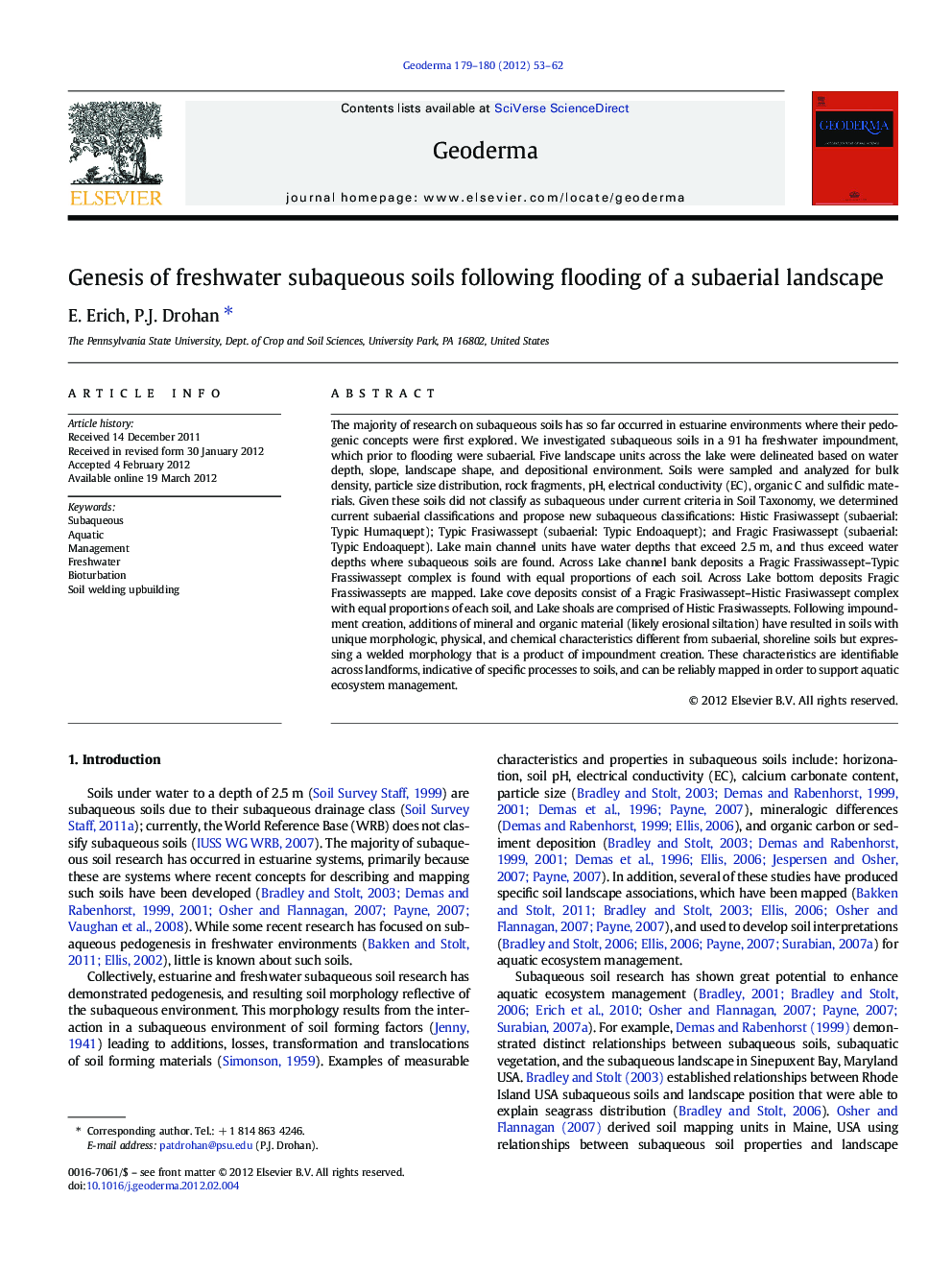| Article ID | Journal | Published Year | Pages | File Type |
|---|---|---|---|---|
| 4573856 | Geoderma | 2012 | 10 Pages |
The majority of research on subaqueous soils has so far occurred in estuarine environments where their pedogenic concepts were first explored. We investigated subaqueous soils in a 91 ha freshwater impoundment, which prior to flooding were subaerial. Five landscape units across the lake were delineated based on water depth, slope, landscape shape, and depositional environment. Soils were sampled and analyzed for bulk density, particle size distribution, rock fragments, pH, electrical conductivity (EC), organic C and sulfidic materials. Given these soils did not classify as subaqueous under current criteria in Soil Taxonomy, we determined current subaerial classifications and propose new subaqueous classifications: Histic Frasiwassept (subaerial: Typic Humaquept); Typic Frasiwassept (subaerial: Typic Endoaquept); and Fragic Frasiwassept (subaerial: Typic Endoaquept). Lake main channel units have water depths that exceed 2.5 m, and thus exceed water depths where subaqueous soils are found. Across Lake channel bank deposits a Fragic Frassiwassept–Typic Frassiwassept complex is found with equal proportions of each soil. Across Lake bottom deposits Fragic Frassiwassepts are mapped. Lake cove deposits consist of a Fragic Frasiwassept–Histic Frasiwassept complex with equal proportions of each soil, and Lake shoals are comprised of Histic Frasiwassepts. Following impoundment creation, additions of mineral and organic material (likely erosional siltation) have resulted in soils with unique morphologic, physical, and chemical characteristics different from subaerial, shoreline soils but expressing a welded morphology that is a product of impoundment creation. These characteristics are identifiable across landforms, indicative of specific processes to soils, and can be reliably mapped in order to support aquatic ecosystem management.
► The majority of subaqueous soil research has occurred in estuarine systems. ► We investigated subaqueous soils in a 91 ha freshwater impoundment. ► We investigated the genesis of these former subaerial soils post-flooding. ► Upbuilding and soil welding are dominant pedogenic processes in this environment. ► Soils, reflecting specific subaqueous processes, can be reliably mapped.
